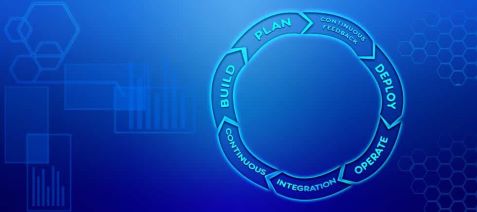Over the last ten years, the agile method has become increasingly popular in all companies, especially those specializing in software publishing. Nevertheless, with hindsight, many tensions emerge between the ayatollahs of the Agile Manifesto and its detractors. Some even go so far as to present it as cancer for the industry.
Far from such extremes, Jean-Yves Devaux, Project Director at IT-Development (ITD), reminds us that, like everything else, we must know how to get the best out of it. ITD has managed to strike the right balance by adopting very effective uses. Thus, his full agile CORE team shares its best practices with the Services department daily. The latter then develops revised agility, to guarantee a “win-win” result.
Yes, the agile method can be virtuous…
Inherited from the world of start-ups, agility is particularly appreciated by the IT world. More flexible, it guarantees faster time-to-market and optimal quality. It strengthens customer relations and team interactions through a more sustained rate of communication. In short, it seems to fit in perfectly with the mindset of the new generations and sweeps away the heaviness of the old models.
At ITD, agility has been 100% adopted by the CORE team. Among all its sub-models, the choice went to the scrum methodology. Functioning based on 3 pillars: transparency, inspection and adaptation.
Developed according to an iteration of time (called “sprints”), the product is subject to several revisions. In this way, the cycle is based on a stable team, regular production frequency, numerous development rituals and constant reviews with the client. Because here, the customer approach is favored. There is greater proximity and continuous improvement. In concrete terms, by encouraging exchanges, developers can change the direction of a project as it progresses. As for the client, he finds a central place. With the scrum method, the final product has already undergone many changes and is therefore much more qualitative.
… but the nerve of the war remains the perimeter of action!
Pure agility is based on production capacity more than on the number of days worked.
Certainly, this method is viable for IT developers. However, it is much more complicated for the business department. At ITD, the Services teams have therefore taken the best of this practice. By relying on a fixed-price agility, they control the scope of actions. They push functionalities continuously. And, by benefiting from a dedicated expert, they ensure optimal quality. At the same time, they use collaborative tools to guarantee greater proximity with the customer.
Contrary to the usual V cycle, the use of this method requires a large number of processes. It requires the implementation of a roadmap from the beginning of the project. The aim is to avoid being overwhelmed by possible additional costs, both on the customer’s side and internally. Because, to remain consistent between the workload, the time spent and the time paid, it is imperative to jointly agree on a “win-win” policy from the outset.
In short, the agile/scrum methodology is virtuous, but it must be applied with care. Indeed, where traditional methods impose an approximate and irrevocable final result, agility offers more flexibility and performance. However, it can quickly become counterproductive and unprofitable if it is not perfectly mastered and framed.
